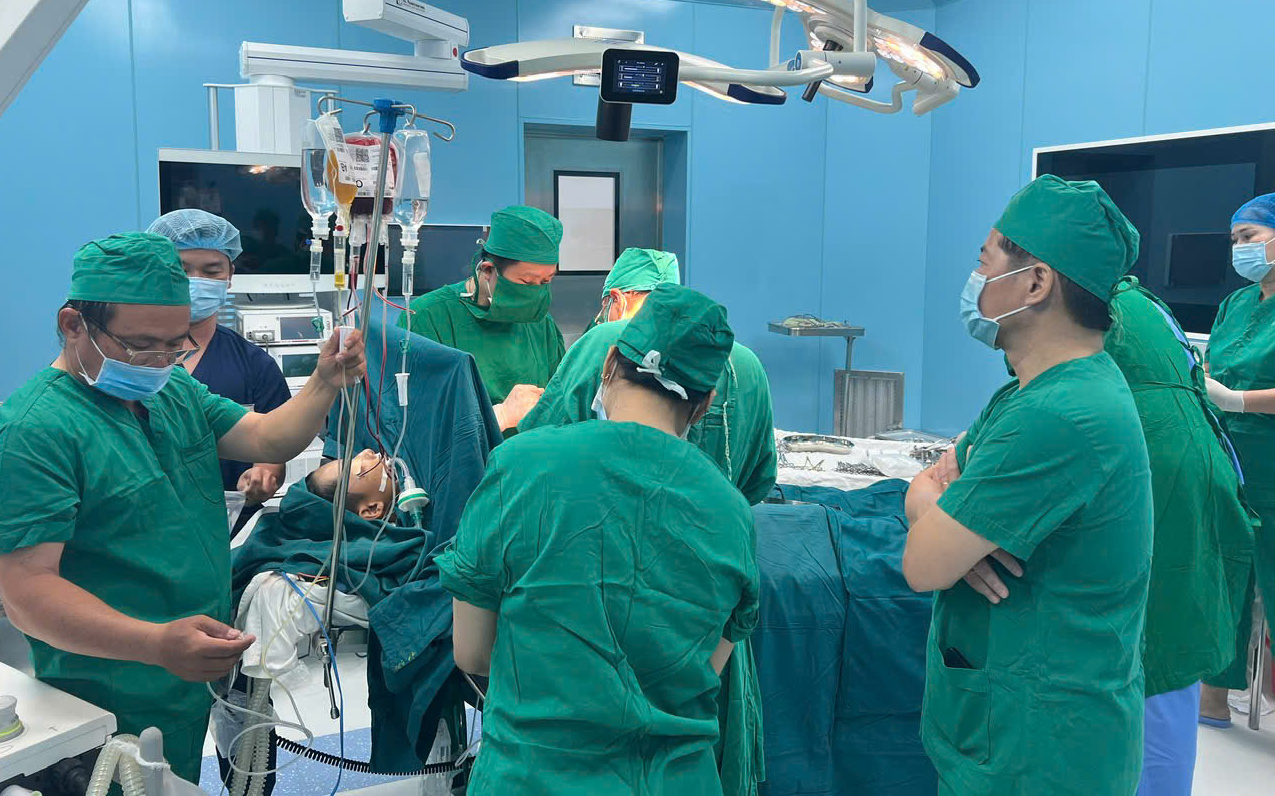The patient was admitted to Con Dao Military-Civilian Medical Center on 7/9. A CT scan revealed injuries to his left kidney, spleen, and pancreatic tail. His condition deteriorated rapidly. Early the next morning, a doctor from Binh Dan Hospital flew to Con Dao to examine the patient. It was determined that he risked hemorrhagic shock without immediate surgery.
On 9/9, Professor Doctor Tran Vinh Hung, director of Binh Dan Hospital, and his surgical team arrived in Con Dao and decided to operate. Doctor Luong Thanh Tung, deputy director of Binh Dan Hospital, led the surgical team. A laparoscopic examination revealed extensive damage: a ruptured left kidney, torn abdominal muscles, hemothorax (blood in the chest cavity), and a bruised pancreatic tail. A large hematoma surrounded the shattered left kidney, making it impossible to save.
The patient underwent open surgery to remove the left kidney, repair the torn abdominal muscles, and insert drains into his chest and abdomen to control bleeding. The surgical team meticulously examined the remaining organs, removed the hematoma, cleaned the abdominal cavity, and closed the incision. The total blood loss during the surgery was 1,500 ml. Hung Vuong Hospital had previously sent 20 units of packed red blood cells to Con Dao to ensure adequate blood supply for the operation. By 10/9, the patient's vital signs were stable, his abdomen was soft, and the drains were functioning properly.
 |
Medical staff operate on the patient at the Con Dao Military-Civilian Medical Center. Photo: Hospital provided |
Medical staff operate on the patient at the Con Dao Military-Civilian Medical Center. Photo: Hospital provided
According to Professor Hung, this was a complex case of blunt abdominal trauma. The patient's survival was attributed to the coordinated efforts of multiple medical specialties, the availability of surgical equipment, and the on-site blood bank. Without prompt surgery, the patient could have experienced acute blood loss, infection from the hematoma, or respiratory failure from the hemothorax. He emphasized the importance of enhancing emergency surgical capabilities in remote areas, utilizing the "golden hour" instead of relying on risky long-distance patient transfers, especially during adverse weather conditions.
Tang Chi Thuong, director of Ho Chi Minh City Department of Health, stated that the immediate plan is to strengthen collaboration among specialists from central hospitals in Ho Chi Minh City. The goal is to develop an on-site surgical emergency system in Con Dao. In the long term, the health sector will focus on technology transfer, training support, and local workforce development, aiming for a sustainable local healthcare system.
Con Dao, formerly part of Ba Ria - Vung Tau province, became a special zone after merging with Ho Chi Minh City. The area has received focused healthcare support to improve the quality of medical examination and treatment, with the goal of "leaving no one behind." Ho Chi Minh City Department of Health launched a rotation program on 3/9, sending seven skilled doctors from major city hospitals to work for one month at the Con Dao Military-Civilian Medical Center. The program currently has enough doctors registered to maintain continuous rotations until the end of 2026.
Le Phuong












